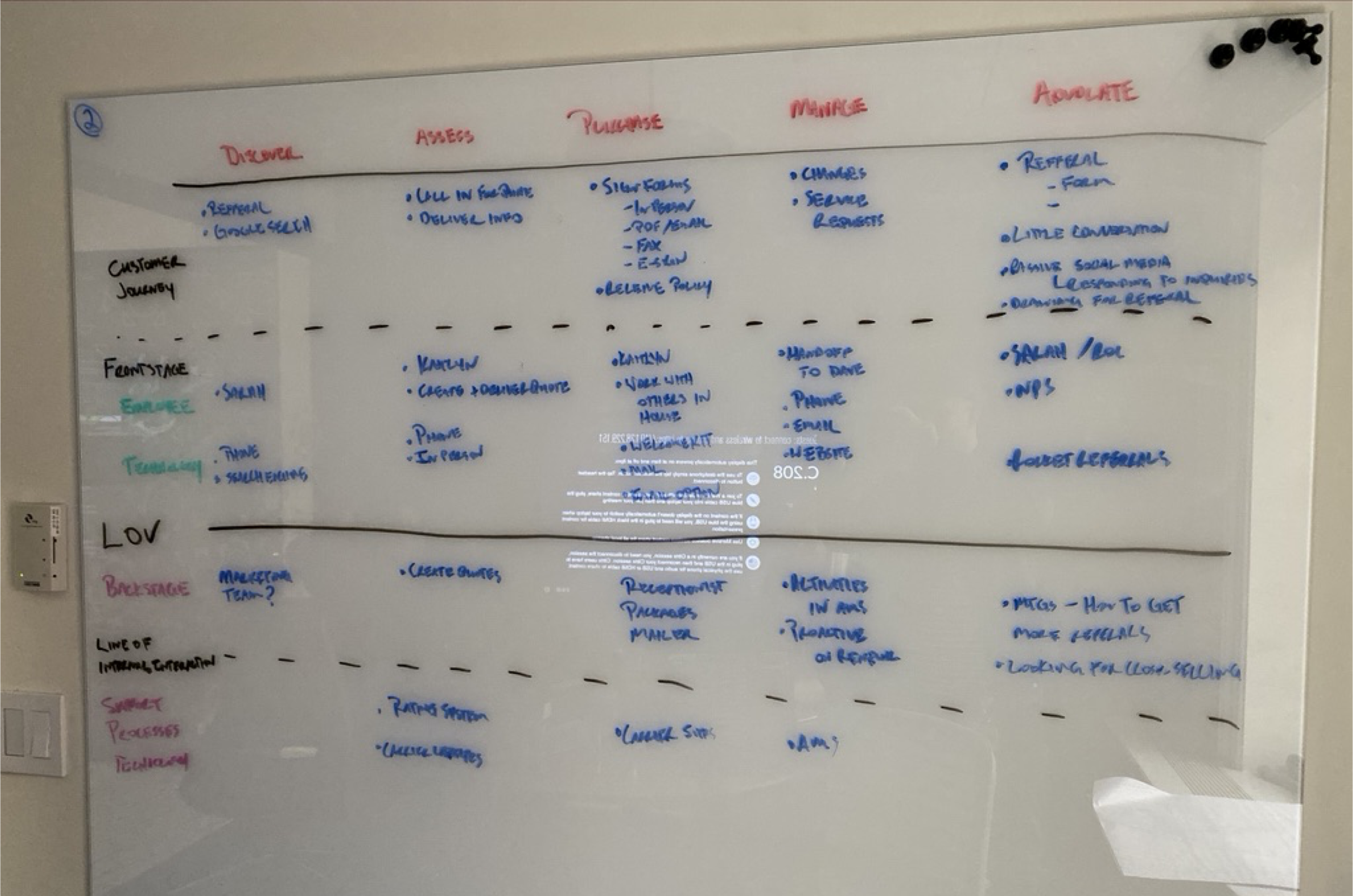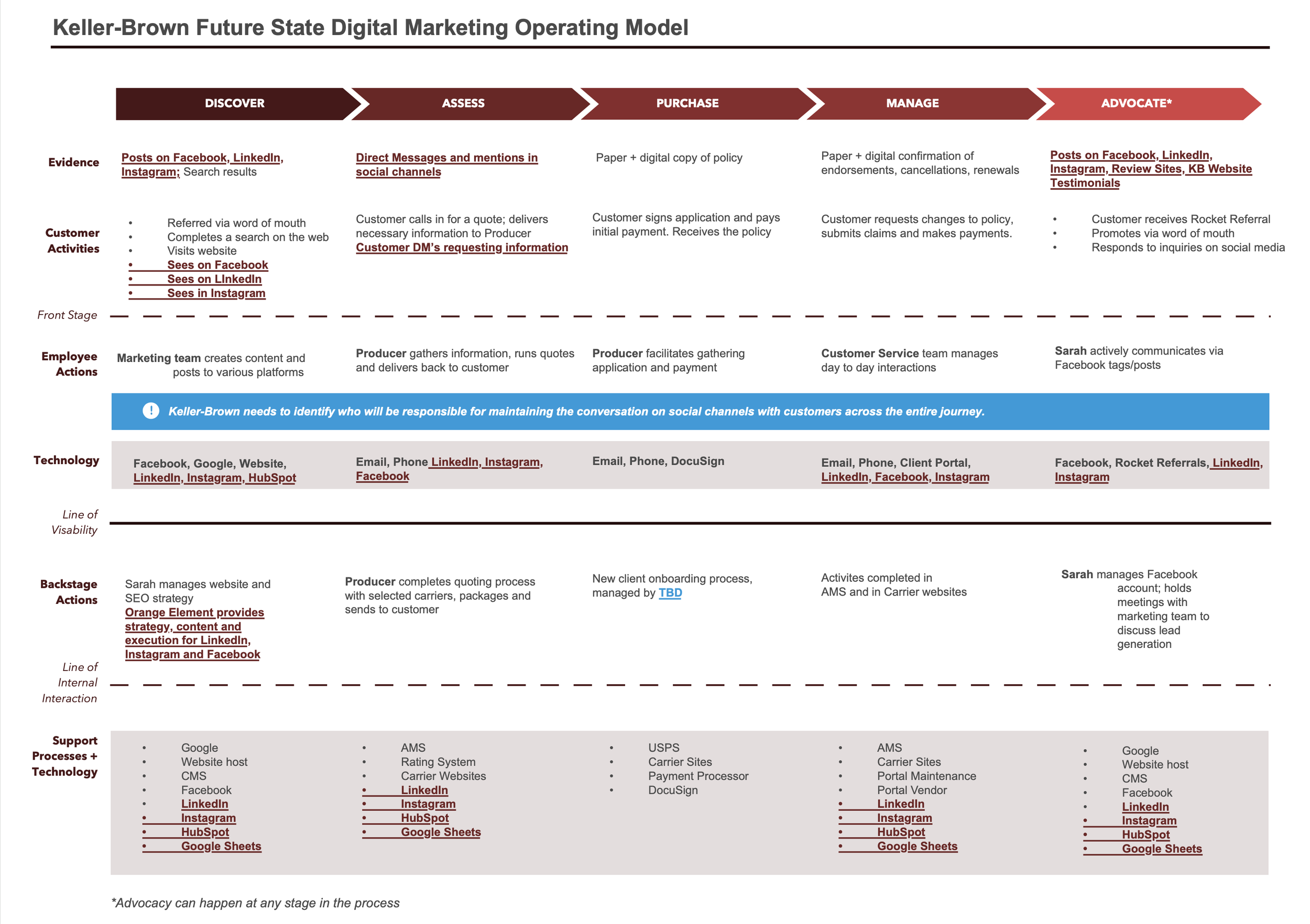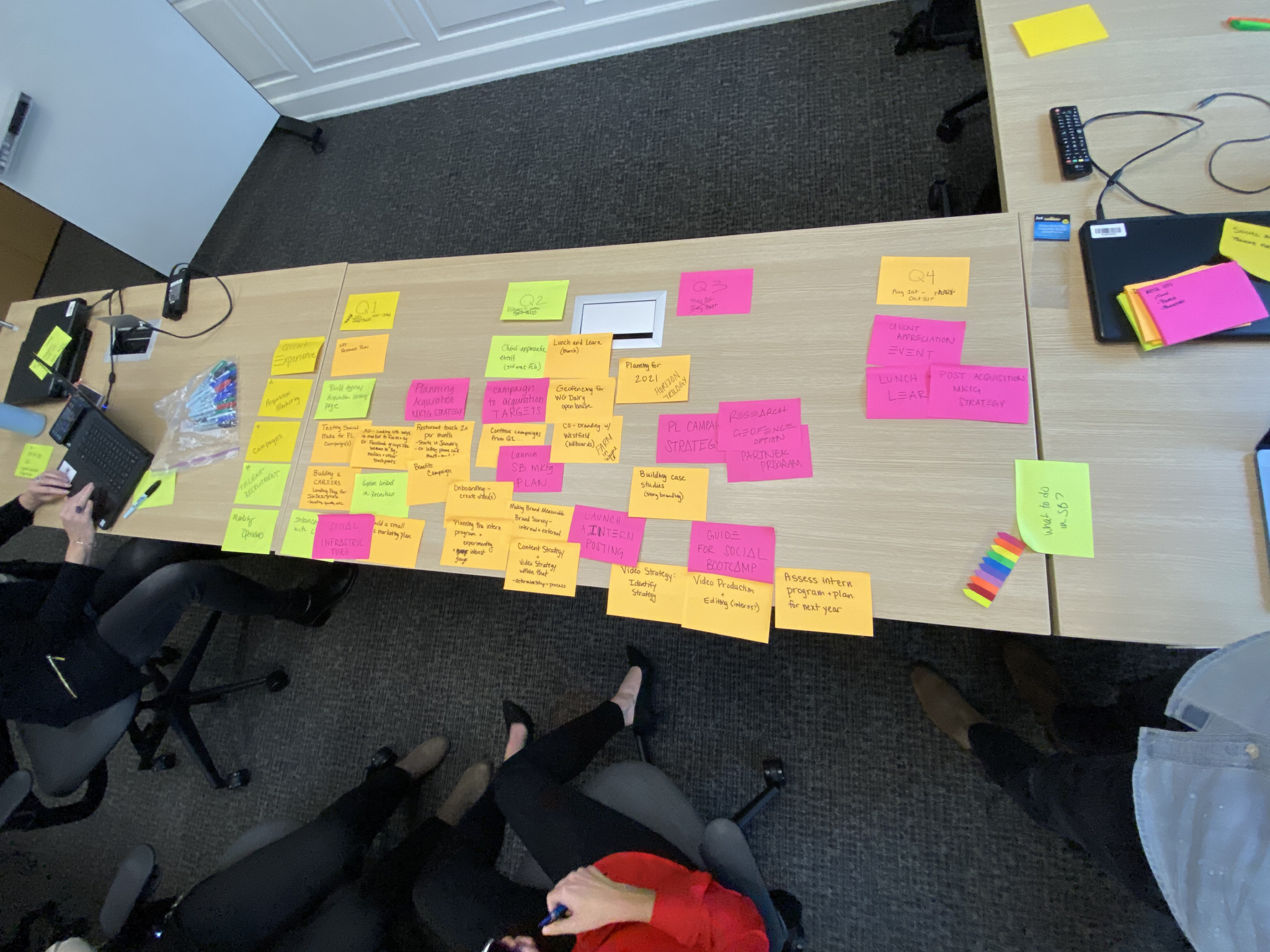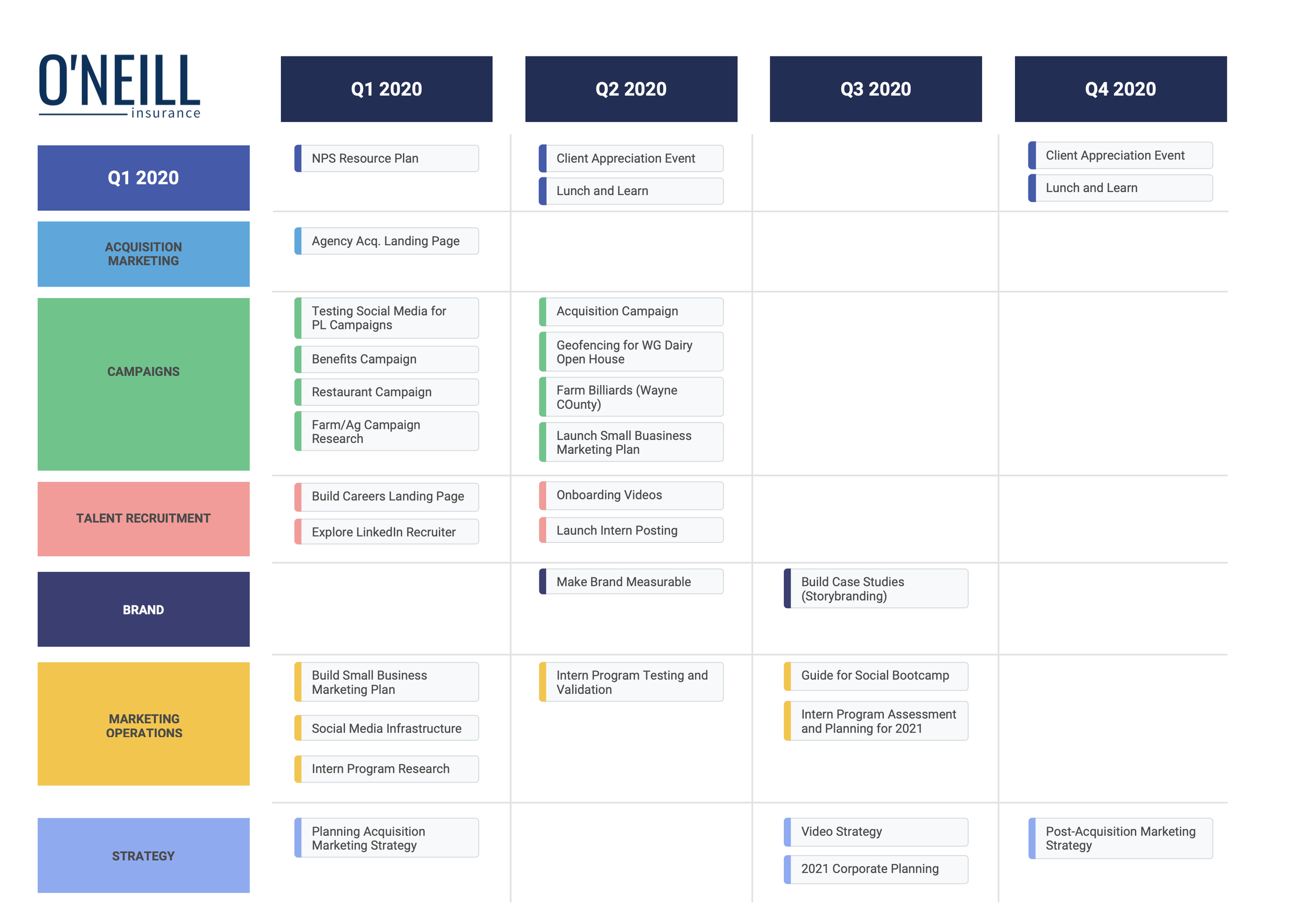Leveraging Internal Marketing Talent to Assist Independent Insurance Agents
In my 16 years of experience as a UX Design Leader, I've encountered various challenges, but one that stood out was at Westfield Insurance, a company that collaborates with independent insurance agents to sell home, auto and business insurance. We identified that many of our partner agencies were struggling with outdated marketing practices and processes. This not only affected their business growth but also impacted the way they interacted with their clients. Recognizing the need for evolution, I proposed leveraging the internal marketing talent of Westfield Insurance to assist these independent insurance agents in better marketing their agencies.
The Problem
The independent insurance agents are critical partners for Westfield Insurance, and their success is paramount to our own. However, most of them were still using traditional marketing methods, which were not effective in the digital age. Moreover, these outdated practices made it challenging for them to compete with larger insurance companies that had more sophisticated digital marketing strategies. Additionally, they did not have the resources or expertise to update their marketing practices and processes. Recognizing the talent within our internal marketing team at Westfield Insurance, I saw an opportunity to bridge this gap and provide a solution to our partner agencies.
The Team
-
Leadership Committee
(Chief Digital Officer, Chief Marketing Officer, Corporate Marketing Leader)
-
Design Lead
(myself)
-
Senior Marketing Strategist
-
Senior UX Designer
Proposal
I developed the idea of a new service that would leverage our internal marketing talent to assist independent insurance agents in marketing their agencies better. I created a pitch that outlined the problem, proposed solution, and the benefits it would bring to our partner agencies and Westfield Insurance. The leadership team, including the Chief Digital Officer, Chief Marketing Officer, and Corporate Marketing Leader, approved a pilot program after a thorough review of the pitch.
The pilot program involved recruiting two agencies to run concurrent programs. The first program involved the research and creation of a service blueprint for the marketing efforts of one partner insurance agency. The second program was a series of workshops that ultimately led to the formation of a Digital Marketing Roadmap for another partner agency.
Project 1 - Blueprint the Future of an Agency
The first program involved creating a service blueprint for one of the partner insurance agencies. This was a crucial step as the blueprint would serve as a roadmap for the agency's marketing efforts.
Research Process
The research process was comprehensive and multifaceted, involving several steps:
Desk Research: Before engaging with the agency, we conducted desk research to gather as much information as possible about the agency's current marketing efforts. This involved analyzing their online presence, including their website, social media channels, and any online advertising campaigns. We also reviewed any available marketing collateral, such as brochures, newsletters, and press releases.
Stakeholder Interviews: We conducted interviews with key stakeholders at the agency, including internal staff, marketing personnel, and agency owners. The purpose of these interviews was to understand their perspective on the current marketing efforts, identify any challenges they face, and gather insights into their goals and available resources. These interviews were conducted either in-person or via video conferencing, depending on the preference and availability of the stakeholders.
Customer Engagement Analysis: We also analyzed the agency's customer engagement strategies. This involved reviewing their customer communication channels, such as emails, newsletters, and social media interactions. We also conducted a survey among a sample of the agency's customers to understand their perspective on the agency's marketing efforts and identify any areas for improvement.
Marketing Performance Analysis: Lastly, we conducted a thorough analysis of the agency's overall marketing performance. This involved reviewing key metrics such as website traffic, social media engagement, conversion rates, and customer retention rates. We also analyzed the return on investment (ROI) of any paid marketing campaigns the agency had conducted.
Developing the Service Blueprint
Based on the findings from the research process, we developed a service blueprint that outlined a new marketing strategy tailored to the needs and resources of the agency. The blueprint included the following elements:
Marketing Channels: Detailed recommendations on the most effective marketing channels for the agency, based on their target audience and available resources.
Customer Engagement Strategies: Specific strategies for improving customer engagement, including recommendations on communication channels, content strategies, and customer feedback mechanisms.
Marketing Performance Improvement: Recommendations for improving the overall marketing performance of the agency, including strategies for improving website traffic, social media engagement, conversion rates, and customer retention rates.
Implementation Plan: A detailed plan for implementing the recommendations, including a timeline, required resources, and potential challenges.
KPIs: A list of key performance indicators (KPIs) to measure the success of the implementation. These KPIs were carefully selected to align with the agency's goals and available resources.
The service blueprint served as a comprehensive guide for the agency to revamp its marketing efforts and improve its overall marketing performance.
“The Westfield team not only provided a literal roadmap to our future, they also highlighted possible opportunities we hadn’t considered and operational hurdles we needed to address. This insight was a leapfrog for us”
— Agency Owner
Project 2 - Workshopping a Roadmap
The second program involved conducting a series of workshops with another partner agency to create a comprehensive Digital Marketing Roadmap. The workshops were designed to facilitate a collaborative process between our team and the partner agency.
Workshop 1 - Current State + Gap Analysis
In order to address the need for a more cohesive approach, we combined essential elements into a single, comprehensive Digital Marketing Assessment and Strategy Workshop. This approach allowed us to create a seamless flow from understanding the agency's current digital marketing efforts to identifying gaps and brainstorming potential solutions.
Current Digital Marketing Efforts Assessment:
Website Analysis: We started by analyzing the agency's website, assessing its design, content, user experience, and search engine optimization (SEO) effectiveness.
Social Media Analysis: Next, we reviewed the agency's social media channels, evaluating the frequency and engagement of posts, the size and activity of the follower base, and the overall consistency of the brand message.
Online Advertising Analysis: We also assessed the agency's online advertising campaigns, looking at the platforms used, the targeting approach, and the ROI of the campaigns.
Goals, Challenges, and Resources Discussion: After the assessment, we had a discussion with the agency representatives about their goals, challenges, and available resources for digital marketing. This helped us understand their perspective and set the stage for the next part of the workshop.
Current Digital Marketing Efforts Assessment:
Gap Identification: Based on the assessment and the discussion, we identified the gaps in the agency's current digital marketing efforts. This included areas where they were not fully utilizing their potential, as well as areas where their efforts were not yielding the desired results.
Solution Brainstorming: After identifying the gaps, we conducted a brainstorming session to come up with potential solutions. We discussed various digital marketing strategies and tools that could help the agency improve its online presence and customer engagement. This involved looking at different options for website optimization, social media engagement, online advertising, and content marketing.
Workshop 2 - Roadmap Development
The second workshop focused on developing a detailed Digital Marketing Roadmap based on the potential solutions identified in the previous Digital Marketing Assessment and Strategy Workshop. The roadmap served as a comprehensive plan for implementing the selected strategies and tools, along with key performance indicators (KPIs) to measure the success of the implementation.
Strategy and Tool Selection: Based on the potential solutions identified in the previous workshop, we discussed and finalized the strategies and tools that the agency would implement. This involved evaluating each potential solution based on its feasibility, potential impact, and alignment with the agency's goals and resources.
Implementation Plan Development: For each selected strategy and tool, we developed a detailed implementation plan. This included specifying the required resources (both human and financial), the timeline for implementation, and any potential challenges that might arise during the implementation.
KPI Selection: We then discussed and selected the key performance indicators (KPIs) that would be used to measure the success of the implementation. These KPIs were aligned with the agency's goals and would provide a clear measure of the effectiveness of the implemented strategies and tools.
Roadmap Finalization: We compiled all the selected strategies, tools, implementation plans, and KPIs into a comprehensive Digital Marketing Roadmap. This roadmap served as a guide for the agency to follow in implementing their new digital marketing strategy.
The outcome of the workshop was a comprehensive Digital Marketing Roadmap that included detailed implementation plans for each selected strategy and tool, along with KPIs to measure the success of the implementation. This roadmap served as a guide for the agency to implement a more effective digital marketing strategy that would help them improve their online presence and customer engagement.
“They heard and listened to what I was saying, and they analyzed it and presented a program that they thought would be valuable for me, and that was mapping out a strategy for 2020 and beyond… I almost view it as a marketing consultant – an outside marketing consultant that cares deeply about the work that we’re doing here.”
— Agency Chief Marketing Officer
Results + Evaluation
At the end of the pilot program, we evaluated the outcomes based on the value delivered to the partner agencies and the feedback received from them.
The partner agency involved in the first program reported a significant improvement in their marketing efforts after implementing the strategies outlined in the service blueprint. They observed increased engagement from their clients and a notable increase in new business inquiries.
The partner agency involved in the second program also reported positive outcomes after implementing the strategies outlined in the Digital Marketing Roadmap. They observed increased traffic to their website, higher engagement on their social media channels, and an increase in new client inquiries.
Based on the positive feedback received from the partner agencies and the affirmed value delivered to them, the leadership team decided to move forward with the full launch of the program, opening the service to all partner agencies and staffing the program accordingly.
Conclusion and Future Directions
The full launch of the program was a significant milestone for Westfield Insurance and our partner agencies. It marked the beginning of a new era where we leveraged our internal marketing talent to assist our partner agencies in evolving their marketing practices and processes.
Reflecting on the entire process, there were several lessons learned. Firstly, the importance of understanding the unique needs and resources of each partner agency. Secondly, the necessity of maintaining constant communication with the partner agencies throughout the process. Lastly, the importance of being flexible and making necessary adjustments based on feedback.
Looking forward, we planned to continuously improve the service by gathering feedback from all partner agencies involved, analyzing the outcomes, and making necessary adjustments to the program. We believed this service will play a critical role in the success of our partner agencies and, in turn, the success of Westfield Insurance.








